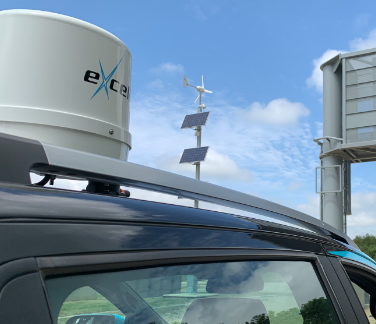The evolution of Incident Command Units
When it comes to responding to emergencies, effective communication, coordination, and situational awareness can make a significant difference in the outcome. Incident Command Units (ICUs) have always played a crucial role in providing that capability, but the way it is delivered has changed dramatically.
As recently as two decades ago, ICUs were equipped with whiteboards, radios, and a few basic amenities to support first responders, but as the importance of situational awareness on and off-site grew, so did the need for more technologically advanced ICUs.

The journey from retrofitting technologies to an end-to-end design and build process has been a crucial turning point in the advancement of these vehicles. The clear benefits of technology that enables the transfer of real-time critical information in any environment has led to the involvement of our customers and partners far earlier in the design and build process.
This has allowed our team to gain a better understanding of our customers’ needs and to be able to successfully deliver a solution that is fit for purpose, future-proof and easy to operate with iPhone-like simplicity. Utilising feedback, combined with our technical expertise has enabled us to build world-leading Incident Command Units for a variety of customers.
Taking the hybrid approach
In recent years, there has been a significant improvement in communication technologies, and reliable connectivity via 4G, 5G and satellite is now widely available. At Excelerate we recognise that our customers require true resilience, and that hybrid connectivity will play a critical role in achieving this. As a result, we have expanded our offering to ensure that our first responder customers can access the best possible connectivity experience whatever their environment – this includes beyond the ICU in hard-to-reach and remote locations.

The Hybrid Edge appliance bonds 4G, 5G, satellite, and any other available connections offering unrivalled connectivity speed, reliability, and performance. Discover more>

Our range of satellite and cellular antennas address the need for high-throughput communications on-the-move in areas where access to reliable connectivity is essential. Discover more>

The Linx Hub portable Wi-Fi hotspot allows the user to connect securely within buildings or any other remote location away from the ICU. Discover more>

Excelerate’s range of real-time video streaming solutions provides safety and reassurance in the moment. Discover more>
Example Use Cases
The solutions we have provided are put to the test every day and enable our emergency service customers to respond quickly and efficiently to any situation, improving outcomes for everyone involved.
Northamptonshire Joint Operations
The Northamptonshire Joint Command Unit (JCU) was launched in 2016 and is still one of the most technically advanced emergency service vehicles in the country. The Joint Operations Team worked closely with us to design and build a vehicle that would allow them to tactically command incidents independently, or jointly with other responding agencies.
By putting connectivity at the forefront of its digital fleet strategy, Northamptonshire has used lessons learned from designing and developing its JCU to propel innovation in their eight new fire appliances.

Hereford and Worcester Fire and Rescue Service (HWFRS) and Shropshire Fire and Rescue Service (SFRS)
HWFRS and SFRS utilise Incident Command Units (ICU) as part of their emergency response strategy. These units allow incident commanders to have closer proximity to the scene, enabling them to provide enhanced support during critical situations.
HWFRS and SFRS also utilise drone technology that can provide an aerial view of any ongoing situation. Live footage can be shared from the drone back to the ICU and other authorised locations, enabling a wider audience to access a birds-eye view of the conditions on the ground. This allows for improved situational awareness beyond the drone pilot.

Hamad Medical Corporation
Hamad Medical Corporation (HMC) is leading the world in placing connectivity at the heart of its digital transformation strategy, enabling the best use of current and future technologies to improve command and control, situational awareness, and ultimately patient care.
Their latest 26-tonne Mercedes command and control vehicle is the second vehicle of that size to enter the fleet, and their fifth Excelerate-built command and control vehicle. The corporation also has a 220-strong fleet of smart ambulances, bringing digital healthcare closer to patients.

Access more use cases here>
Incident command units are an invaluable asset for emergency response and help to improve communication, resource management, and safety. Looking back at the vintage ICUs, it’s clear how far we’ve come in the past 22 years. The evolution from white boards to resilient situational awareness is a testament to the power of technology and the importance of working in collaboration.





















